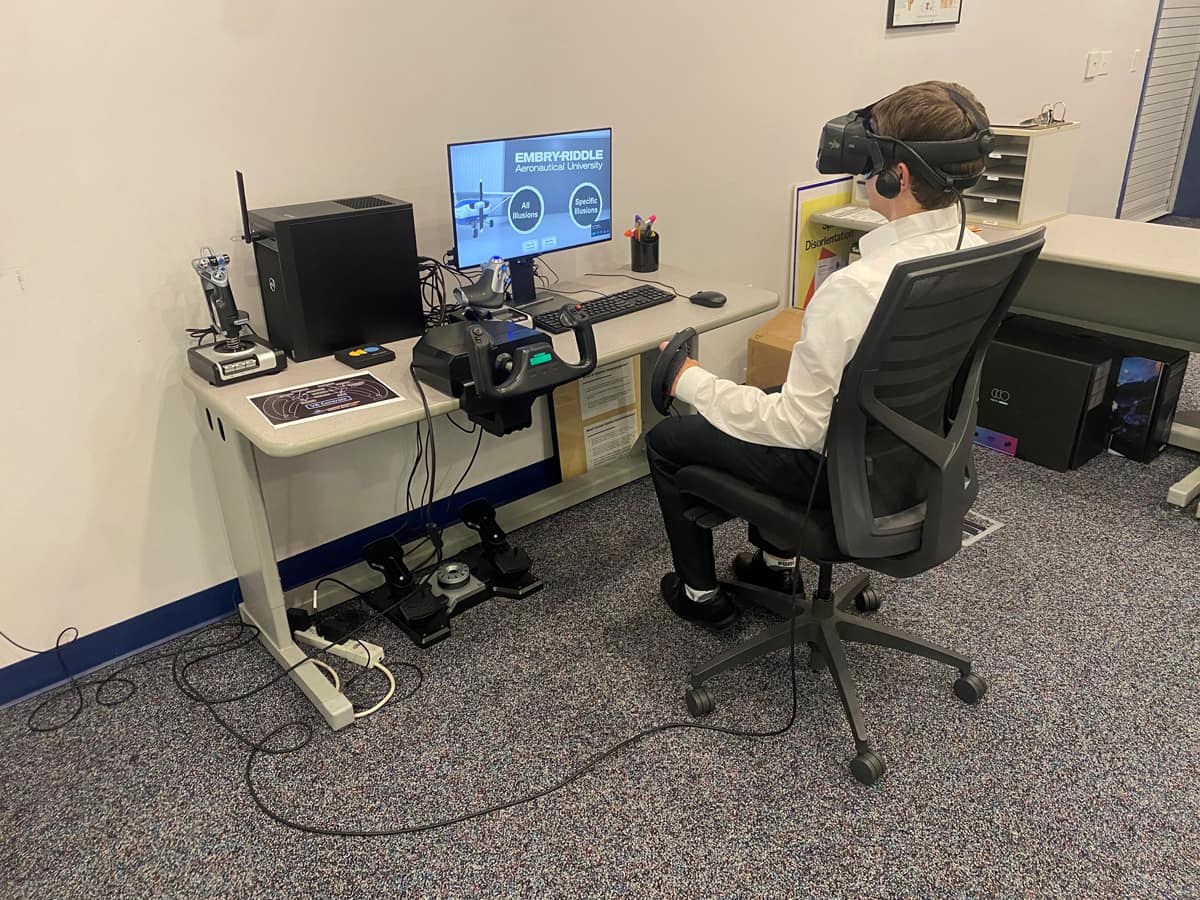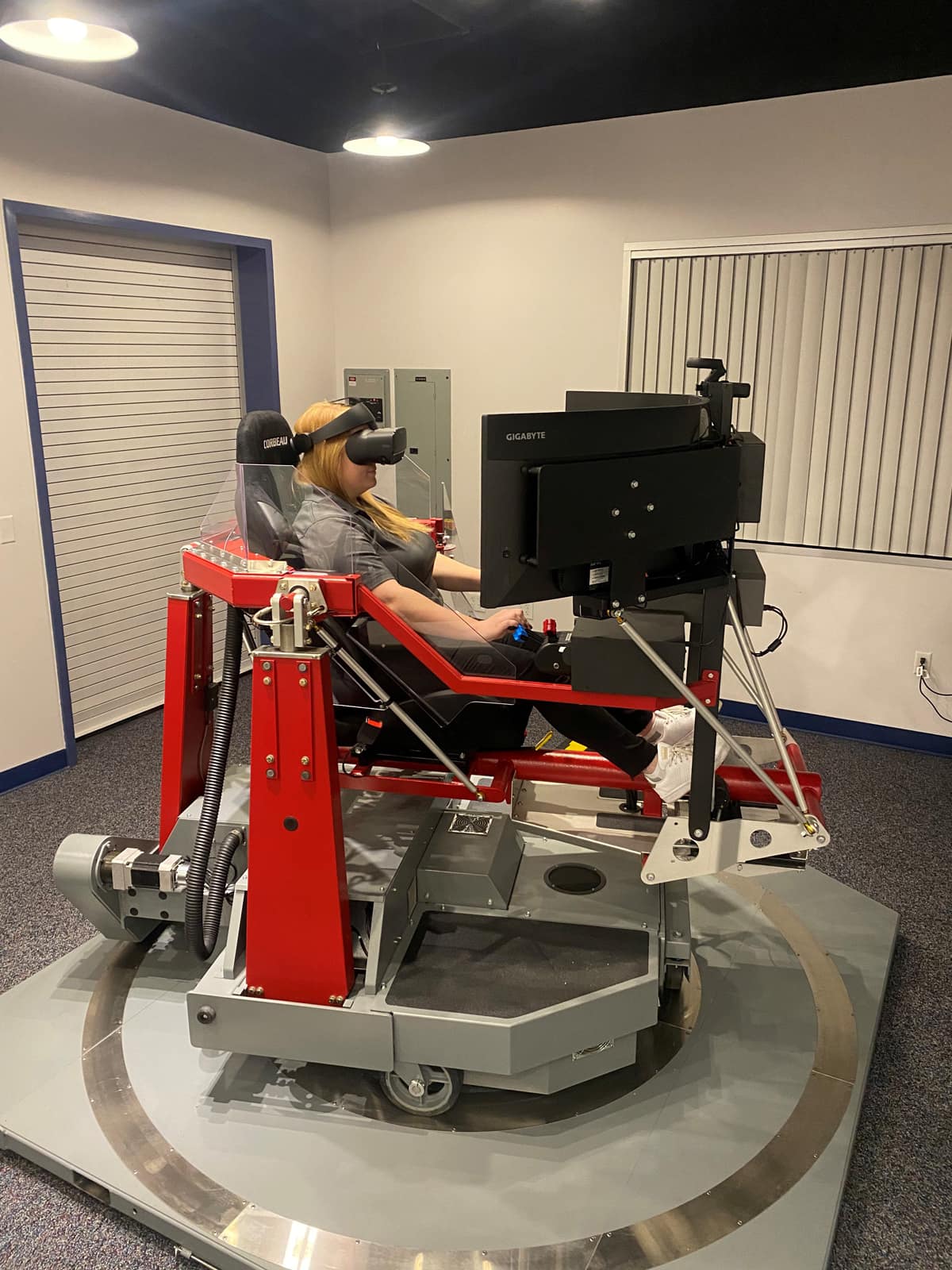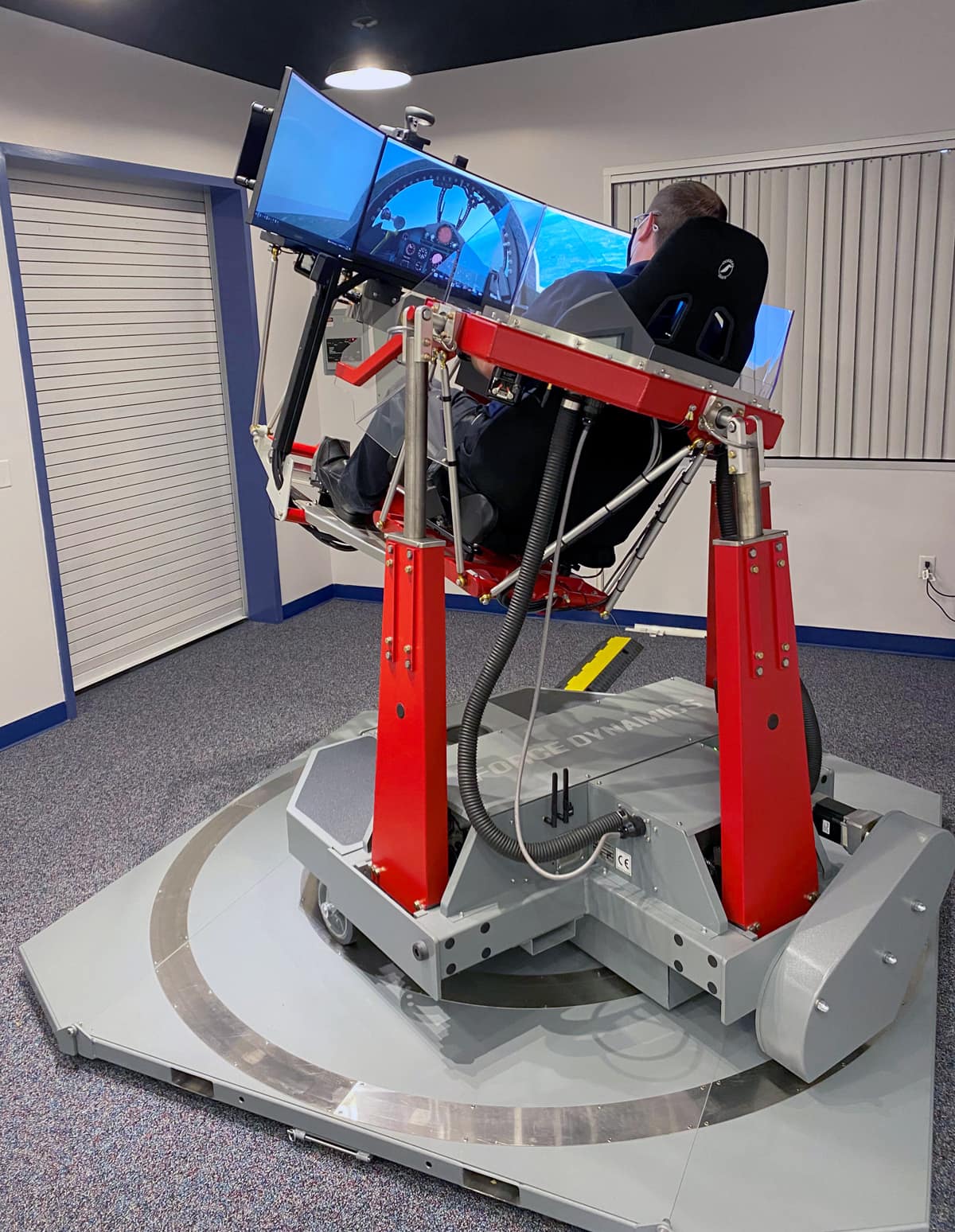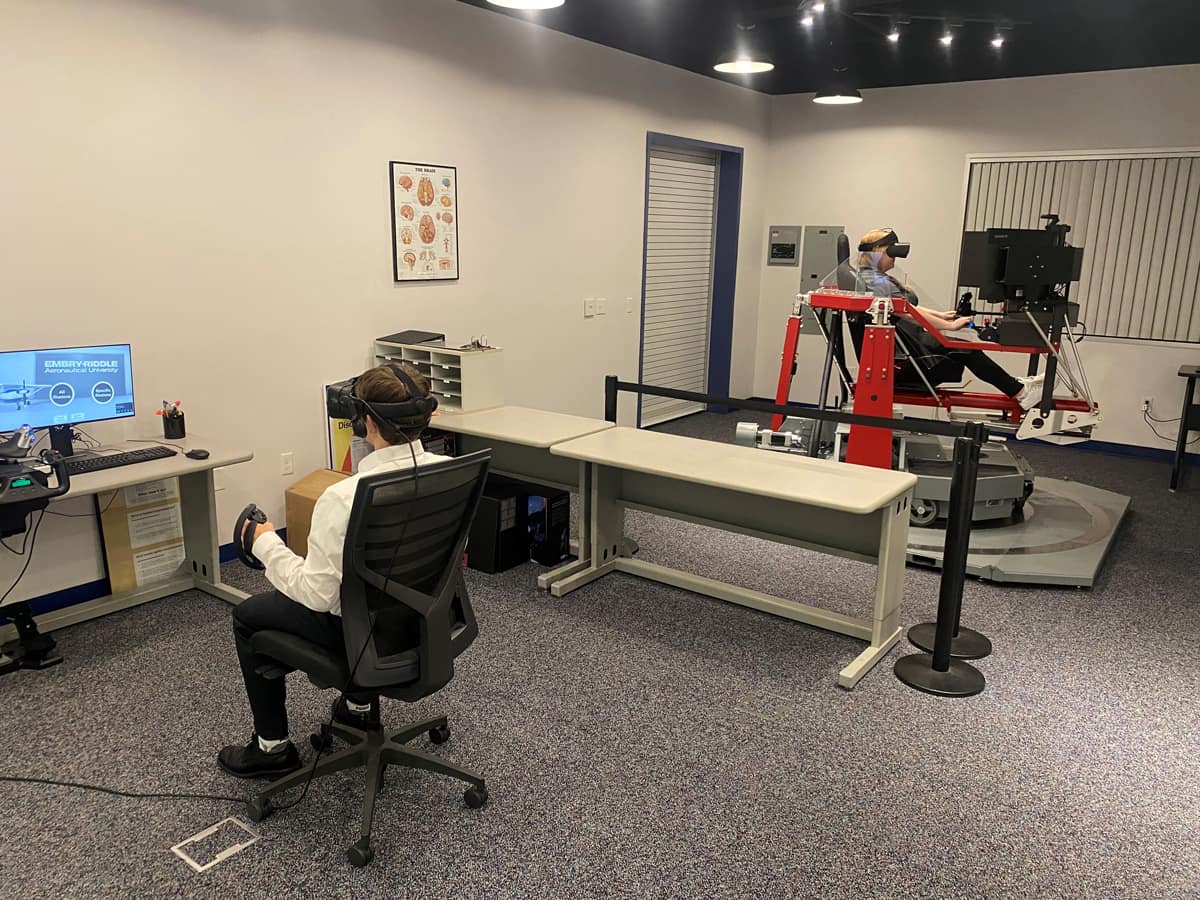The Spatial Disorientation (SD) Training Lab provides students the opportunity to experience visual and vestibular illusions that may occur during flight.
Students gain awareness of these illusions and ways to avoid spatial disorientation. The SD Training Lab prepares students to recognize an illusion when it happens during flight and to take immediate and appropriate action.
Equipment
- Force Dynamics 401cr full-motion simulator
- Virtual Reality (VR) computer station
- Professional quality VR headsets from Steam and Varjo
Research Capacity
The lab uses integrated VR and a motion platform to investigate the implications of spatial disorientation visual illusions. Previous work on upset recovery training has also been conducted in the SD Lab.
Lab Information
Location: College of Aviation 132C
Lab Director: Dr. Robert Thomas
Contact Us: To speak to someone about this lab or any of our facilities, call us at 386-226-6100 or 800-862-2416; Email Daytona Aviation Labs at dbdeanga@erau.edu.




